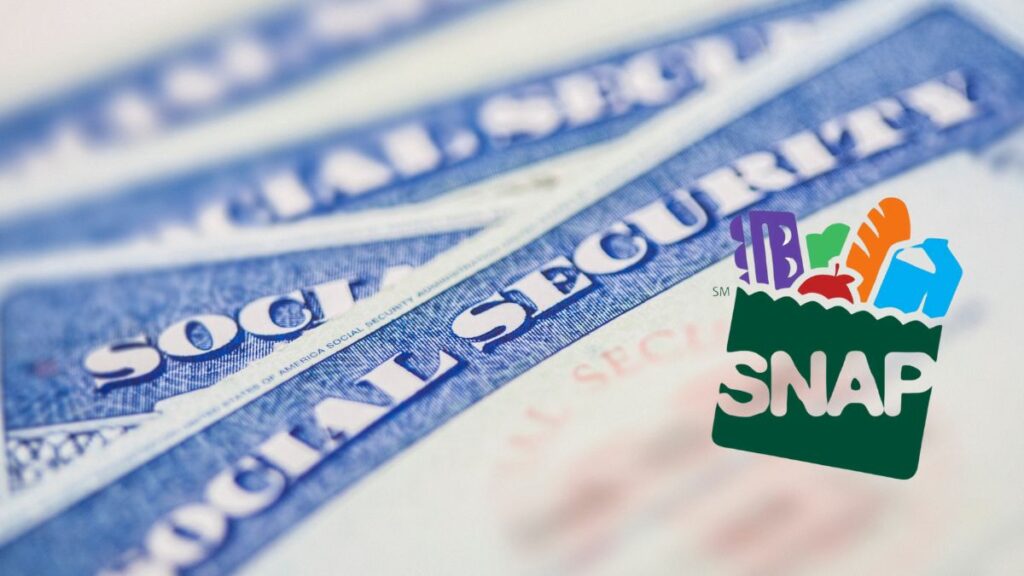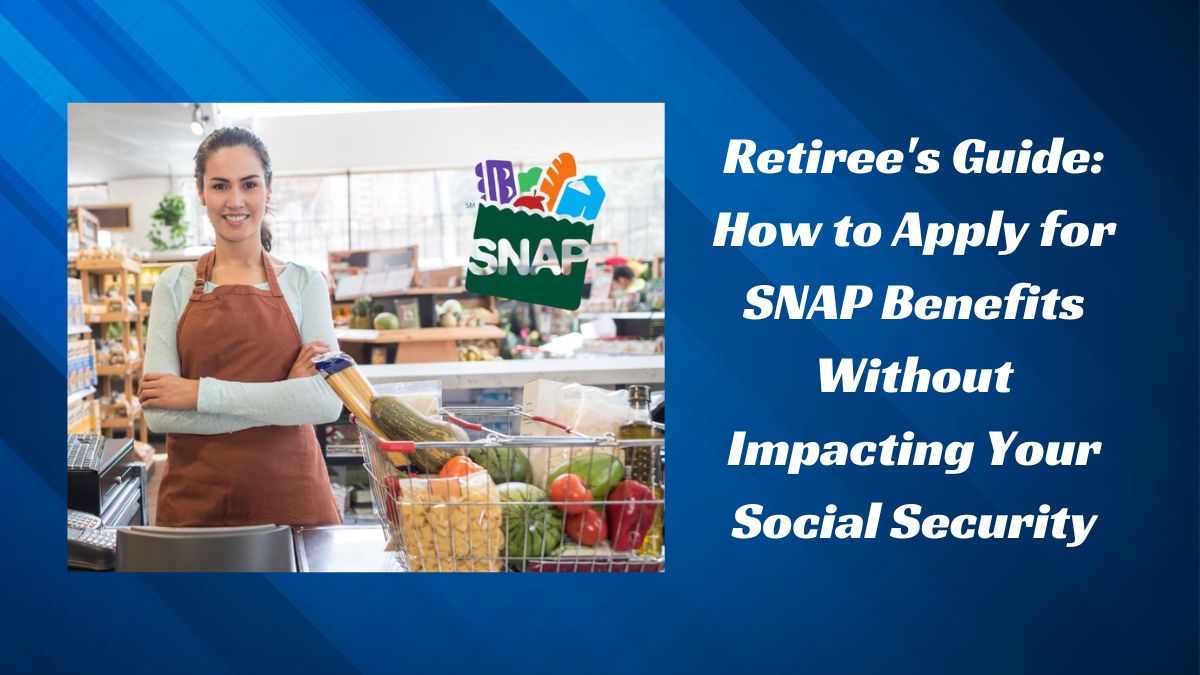Many seniors in the US depend on their Social Security income to pay for their living expenses. However, retirees may struggle to meet their financial needs as a result of the increasing expenses associated with the cost of living.
This is where the Supplemental Nutrition Assistance Program, or SNAP, comes into play. SNAP offers extra cash support to low-income people, including retirees, so they can buy food.
The good news is that SNAP Food Stamps can be applied for by retirees without having an adverse effect on their Social Security benefits. Here’s how.
Understanding How SNAP and Social Security Work Together

While Social Security offers retirement income, the SNAP program helps low-income people purchase wholesome food. You can apply for SNAP without fearing that your Social Security benefits would be diminished, because both programs have different goals.
However, your eligibility for SNAP is largely determined by your income, and when you apply, Social Security is included in your income.
To guarantee that your Social Security retirement payments are unaffected, there are several procedures to follow in addition to the simple SNAP application process.
How Retirees Can Apply for SNAP Benefits
1. Check Eligibility Requirements
Your household’s size and income are the main factors that determine your eligibility for SNAP. Although Social Security is regarded as income, it does not automatically preclude you from receiving SNAP; the income level varies by state. Assistance may still be available to low-income retirees.
2. Gather Income Documentation
You must submit documentation of all your income sources, including Social Security benefits, when you apply for SNAP. Make sure you have any supporting evidence that shows your monthly income, such as bank bills and Social Security award letters.
3. Apply Online
You can sign up for SNAP benefits by going to a local SNAP office or applying online on your state’s website. The SNAP application process varies slightly depending on where you reside because each state oversees its own program. The government will evaluate your eligibility and total income when you submit your application.
4. Await Your Eligibility Decision
Following submission, your application will be examined, and your eligibility will be determined. A SNAP benefits card, which may be used to buy groceries at participating stores, will be issued to you if you are eligible.
Important Information to Know About SNAP and Social Security
Retirees must comprehend how SNAP and Social Security retirement payments relate to one another:
- Social Security Income: Although Social Security funds are included in your household income, they do not immediately lower your eligibility for SNAP benefits.
- Deductions: SNAP permits a number of deductions, including housing and medical expenditures, which can help you qualify by reducing your gross income.
- Cost of Living Adjustments (COLA): Your eligibility for SNAP may be impacted by the yearly COLA rise in your Social Security check, but it does not imply that you will no longer receive benefits. To keep your eligibility, report any changes and take advantage of any deductions that are available.
Key Income and Deduction Information
| Factor | Details |
|---|---|
| Income Threshold | Varies by state and household size. Social Security is included in total income. |
| Deductions Allowed | Medical expenses, housing costs, and utility allowances. |
| SNAP Eligibility Impact | Social Security benefits are considered, but deductions can reduce countable income. |
| Reporting Changes | Report any income changes, such as COLA increases, to ensure continued eligibility. |
| Application Process | Apply online or in person with income documentation. |
Maximizing Benefits with Mixed Household Incomes

Your eligibility for SNAP is also based on the income of any other members of your home who do not get Social Security, if you live in a mixed household. This could, however, be advantageous to you because you might be eligible for additional deductions for things like daycare fees or increased medical bills.
It is feasible to apply for SNAP benefits while collecting Social Security, and the two programs are meant to work in tandem. Retirees can obtain both forms of financial aid without endangering their Social Security income if they are aware of the regulations and follow the right procedures.
You may optimize your retirement benefits and enhance your quality of life by keeping up with changes to reporting requirements, deductions, and eligibility requirements.
FAQs
No, receiving Social Security benefits does not automatically disqualify you from receiving SNAP. Eligibility depends on your total household income and deductions.
You can apply online through your state’s SNAP portal or visit your local SNAP office. Be sure to have all necessary income documents ready.
If your Social Security check increases due to the Cost of Living Adjustment (COLA), it may impact your SNAP benefits, but you can report this change and take advantage of deductions to maintain eligibility.
Yes, if other members of your household don’t receive Social Security, their income will be considered, but this can allow you to qualify for additional deductions.
Deductions for medical expenses, housing costs, and utilities can lower your countable income, increasing your chances of qualifying for SNAP.




